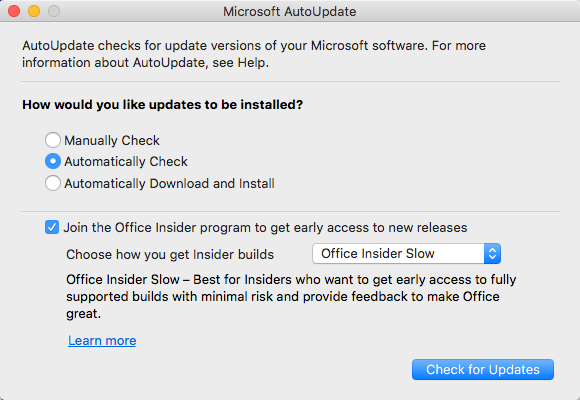Baskin-Robbins, the ice cream retailer, has gotten a lot of mileage from its “Thirty-Onederful Flavors” slogan over the years, referring to the 31 flavors of ice cream you can find in their shops. What is less clear is how SAP fared after thirty-one releases of its Lumira 1.x data visualization software. After 31 releases of version 1, customers spent 2016 waiting for SAP to marry Lumira and Design Studio together as Lumira Discovery and Lumira Designer, respectively. Then we spent 2017 waiting for SAP to resolve the infamous compiler issue and ship Lumira 2.1 with additional stability, only to relegate Lumira Discovery to the dustbin of history in favor of SAP Analytics Cloud as the company’s standard bearer for data discovery (see related article, Everything Must Change).
SAP Analytics Cloud is receiving updates roughly every two weeks, which is even more frequent than the point releases of SAP Lumira 1.x we received around every six weeks. I believe that there are three lessons from SAP Lumira’s development that could improve customer appreciation and adoption of SAP Analytics Cloud.
Better to ship when ready, not when the trade show is scheduled.
SAP Lumira debuted in May 2012 as SAP Visual Intelligence at SAP’s annual SAPPHIRE user conference in Orlando, Florida (see Cindi Howson’s blog, SAP Releases Visual Intelligence, Innovates in BI). Many customers heard “it only works with SAP HANA” even though additional connectivity to other relational databases and universes appeared fairly quickly in future updates. Unfortunately, many customers held onto “it only works with HANA” long after it was no longer true and it took significant effort by SAP and its partners to educate its customers about the current state of the product.
Apple abandoned its trade show schedule several years ago with great success. Instead of its previous practice of introducing new products every January at a (now defunct) trade show called Macworld Expo, today Apple releases products throughout the calendar year when they are ready. I recognize this would be a huge marketing shift for SAP and it’s current “SAPPHIRE or TechEd” release schedule, as we will most likely see new SAP Analytics Cloud features demoed on this year’s SAPPHIRE stage.
I wonder if Lumira would have had a warmer introduction if it had been released a few months after SAPPHIRE but with a larger feature set?
Measure twice and cut once?
There’s always a trade-off when introducing a new feature into software. Do you wait until the feature is fully developed? Or do you deliver it gradually over multiple releases? In theory, agile development sounds great because we can get new features now and that they’ll be extended over time to be even more useful.
In practice, we’ve often been given a feature that is so limited that it has to be completely ripped and replaced with something else. Key examples here are SAP’s first attempts at adding universe and BEx connectivity to Lumira. In both cases, first attempts at connectivity were full of limitations. In the case of the universe connector (see related article, Squeezing the Entire Universe Into SAP Lumira), the universe panel didn’t have the user experience of universe panels in SAP’s well-established analytics products, missing many key features. These premature releases become opportunities for customers to conclude that a product still isn’t ready for prime time – a gut reaction that even clever marketing can find difficult to change later.
Integration vs. Add-Ons
Once Lumira went from being a stand-alone desktop tool to one that could be used with the BI platform via an add-on, Lumira’s frequent release schedule became even more frustrating to BI managers and IT directors. To SAP’s credit, each new release of the Lumira add-on for the BI platform introduced a “must have” feature. Unfortunately, most IT departments did not have the luxury of upgrading Lumira every time SAP delivered a new release.
To compound the problem, because Lumira continues to be an add-on and not an integrated component of the SAP BI platform, it adds hours of planning and installation time to what should be simple product patching. Now that Lumira is released on a similar quarterly schedule as the BI platform, it would make sense to finally integrate the two, save for the SAP’s recent roadmap changes. SAP has indicated that for 2018, SAP Analytics Cloud is the preferred solution for data discovery over SAP Lumira Discovery. And as of tomorrow (perhaps as early as this year’s SAPPHIRE?), SAP Analytics Cloud will eventually be the preferred solution over SAP Lumira Designer for dashboards and analytic applications.
Microsoft has a solution for Microsoft Office 365 that could work well if adopted by SAP Analytics Cloud. SAP provides connectivity to on-premise data sources via the SAP Analytics Cloud Agent. In many cases, a new version of SAP Analytics Cloud requires a new version of the agent to work properly. With SAP Analytics Cloud receiving updates every two weeks, this means BI administrators will spend a lot of time either updating the agent or explaining why SAP Analytics Cloud is “broken”. And in some cases, too many updates of a cloud-based product, especially its user experience, could cause frustrated users to wonder “Who Moved My Cheese“.
Microsoft provides three update “speeds” in its AutoUpdate feature for Microsoft Office 365. First, there is the traditional setting, which provides the least amount of change and the greatest amount of stability. Next, there are two variations of its Office Insider program, Slow and Fast.
Although most SAP customers probably wouldn’t be a fan of an SAP Analytics Cloud Insider Fast setting, some early adopters and of course partners probably wouldn’t mind seeing new features before everyone else.
Since I do “mind a bit of risk using unsupported builds,” I keep my Microsoft Office Update set at Office Insider Slow. By providing a similar feature, SAP could allow its SAP Analytics Cloud customers to choose their desired rate of change. Some customers may want a cloud product that only receives significant changes on a quarterly or perhaps even semi-annual basis. Other customers will appreciate both the features and the BI platform risks of the current two-week cycle. And still other customers and partners may want to see features before they’re ready for prime time.
Perhaps I’m in the minority, but I believe thirty-one public releases of SAP Lumira was too many for the SAP analytics community to pay attention to. And in some cases, agile development delivered a feature that was so problematic, it had to be completely redesigned in a future release. Lessons learned from SAP Lumira could help improve the perception and adoption of SAP Analytics Cloud. What do you think?






“In many cases, a new version of SAP Analytics Cloud requires a new version of the agent to work properly….this means BI administrators will spend a lot of time either updating the agent or explaining why SAP Analytics Cloud is “broken”..”
AGREE 100% about the Challenges of putting SAP LUMIRA in the BI Platform, and then maintaining it to keep the supported-versions synchronized on the platforms and plug-ins.
Now, with SAC – whatever SAP is planning to do with the “Magic Yellow Arrows” on their slides that shows SAP Analytics Cloud connecting with BI Platform, Universes, BW, etc – will need a lot more “wiggle-room” on the versions of the On-Premise components that it can safely connect with.
Large-Scale use of SAC in the Public Sector is possible – but only if we can ensure that we don’t get “surprised” by something that happens in their 2-week release cycle.
We need “Innovation with Stability” – and I don’t get the sense that (m)any of the the SAP Analytics Cloud team have actually considered the challenges of Large-Scale deployments with On-Premise Connections to multiple systems.
Hoping that INFLUENCE channels via ASUG (and others) brings some of this to the Surface with the Product Development, Delivery & Stability teams on SAC.
You brought it to a pointy Point 😉
Hi Dallas,
The release strategy for Lumira 1.x was indeed practically unworkable since the BI Platform add-on was included.
I’m currently working on a large SAP Analytics Cloud project in which SAP is also heavily involved, and there are indeed some plans to offer such a ‘preview/next wave’ tenant for customers. In addition, the GA tenants sometimes already contain ‘future’ features that can be activated by SAP on request.
Cheers,
Xavier
Hi Dallas,
I recognize what you are saying about the ‘forced’ upgrade of the SAP Cloud Agent. A couple of months back an update was required every two weeks, especially when using BW as a (Live) datasource. I have to say it’s pretty much stabilized. Currently 1.0.97 is available but 1.0.85 is the highest required version.
Furthermore I believe that the short-release cycle of SAP Analytics Cloud, new features every 2 weeks, has great benefits in terms of user-adoption which we lack with Lumira. For the first time you don’t have to tell the (key-)users in your organisation that although features have been released, they will not be available until 6-months time when the next on-prem upgrade of the BI Platform is scheduled :-(.
With kind regards,
Martijn